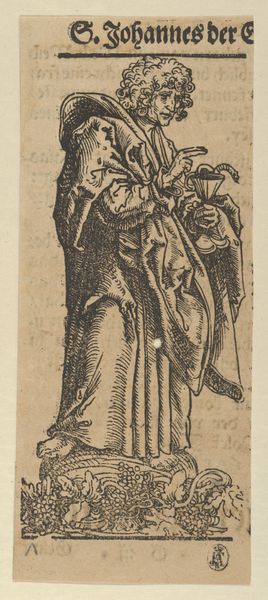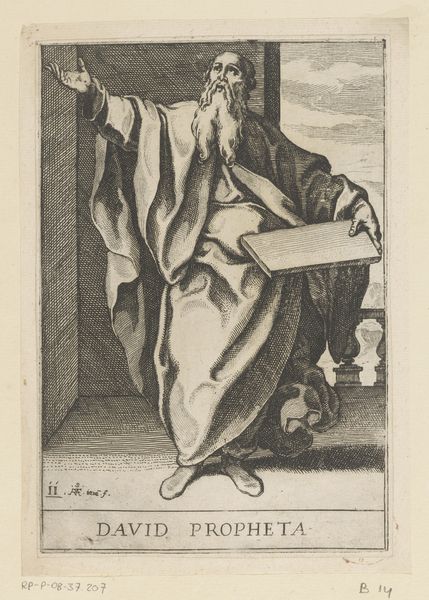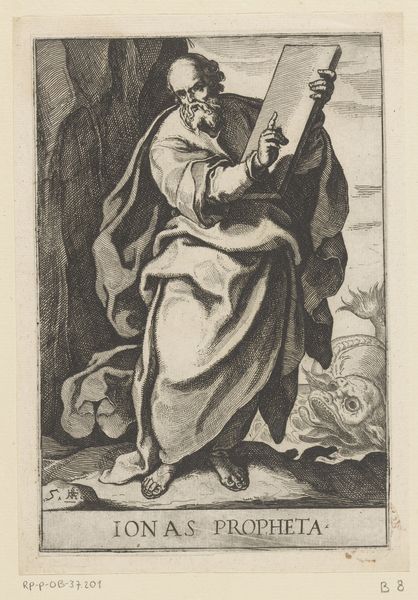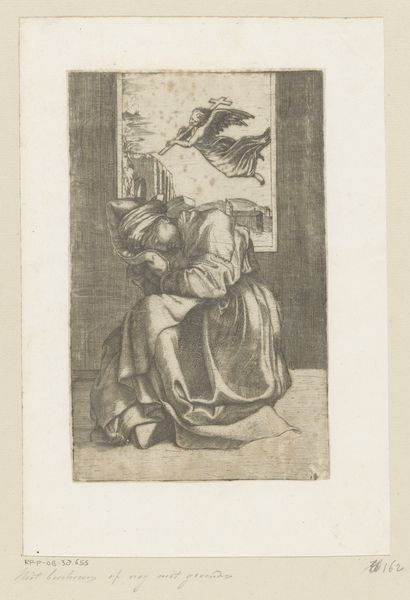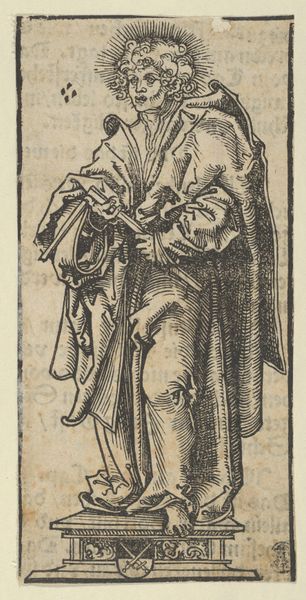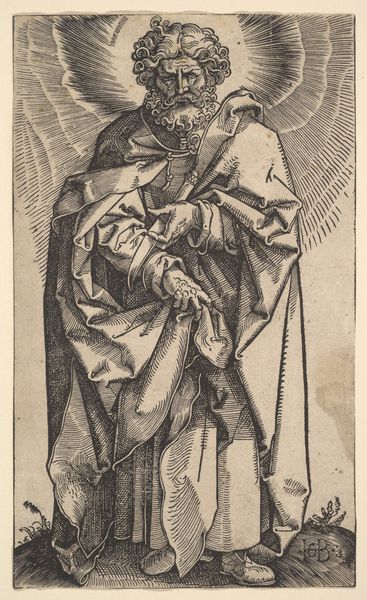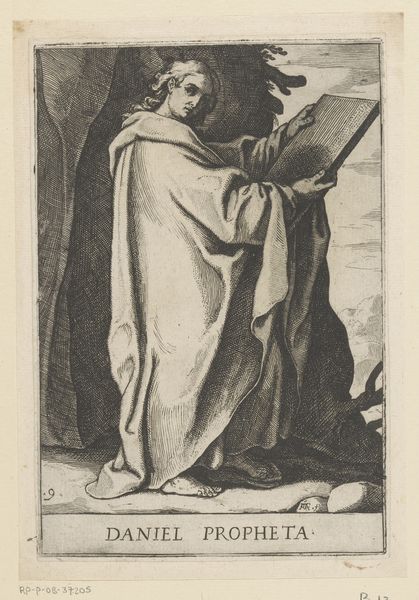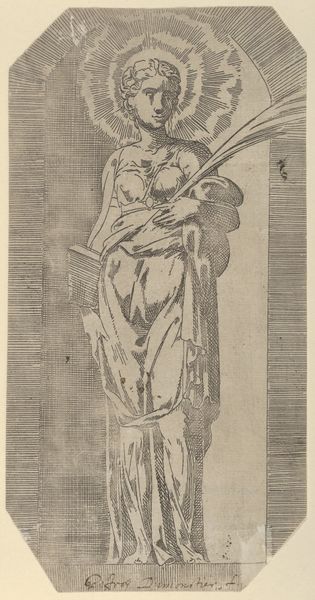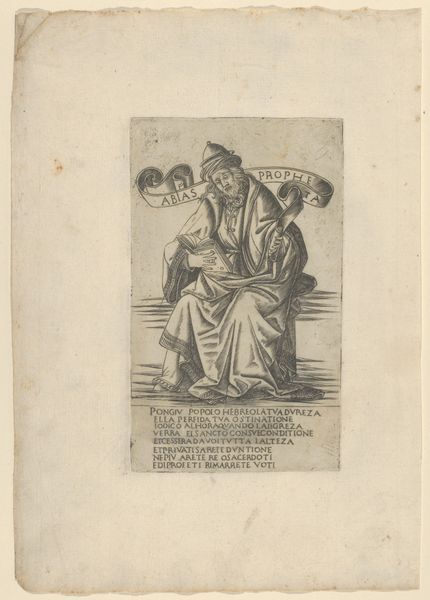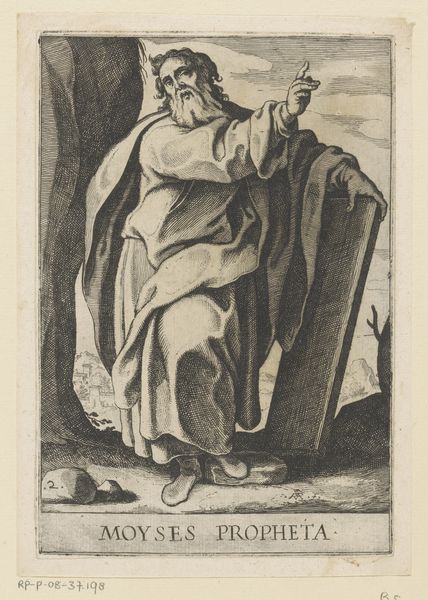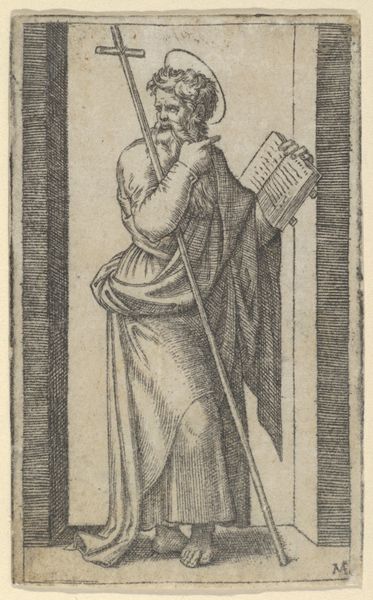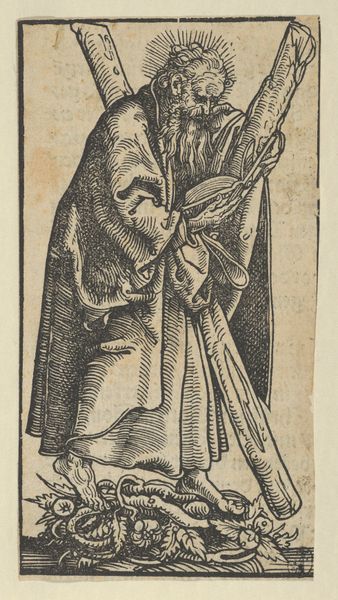
print, engraving
#
portrait
#
allegory
# print
#
old engraving style
#
figuration
#
11_renaissance
#
northern-renaissance
#
engraving
Dimensions: height 112 mm, width 53 mm
Copyright: Rijks Museum: Open Domain
This print, thought to be made in 1588 by Pieter van der Keere, shows a female personification of virtue, realized with the printmaking technique of engraving. Look closely and you’ll see how the artist used a tool called a burin to manually carve lines into a metal plate, which was then inked and pressed onto paper. The sharp, precise quality of the engraved line lends a crispness to the figure’s draped clothing and the texture of her hair. The process itself is labor-intensive, demanding great skill to translate a concept into physical form. It’s worth remembering that printmaking in this era was a powerful tool for disseminating ideas, as it served to circulate images beyond the realm of unique, precious artworks. Van der Keere’s choice of engraving suggests a desire to distribute the idea of virtue widely through the channels of early modern visual culture, embedding it in the public consciousness. Considering these prints, we can begin to appreciate how their material qualities and methods of production influenced their social impact, blurring boundaries between art, craft, and the circulation of knowledge.
Comments
No comments
Be the first to comment and join the conversation on the ultimate creative platform.
